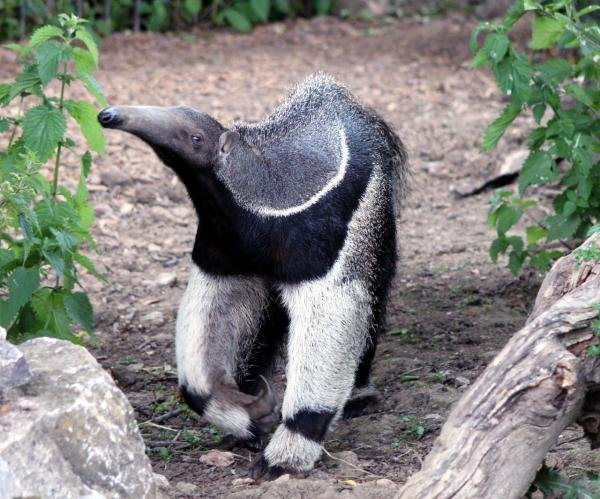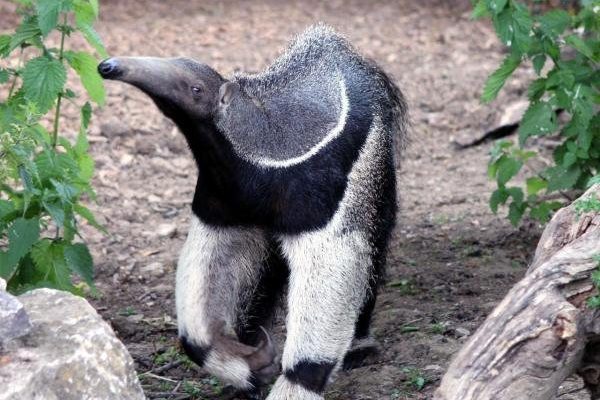
Now, when we talk about giant anteaters, we’re not just diving into their habitats for fun. Understanding where they live is essential for appreciating their role in the ecosystem and the challenges they face. Imagine trying to learn about a new friend without knowing where they hang out! So, let’s explore the world of giant anteaters, from their chosen terrains to the environmental factors that help them thrive.
Natural Habitat of Giant Anteaters
Giant anteaters have a pretty diverse living situation. They primarily inhabit savannas, grasslands, and forests across Central and South America. Think of their habitat as a smorgasbord of environments. They enjoy open spaces where they can roam but also need areas with plenty of insects to munch on—primarily ants and termites.
These creatures are particularly drawn to regions with a mix of short grass, dense underbrush, and trees. This combination offers them both food and protection from predators. A giant anteater’s ideal home balances the need for exploring vast spaces and finding cozy spots to rest during the day. After all, they are nocturnal, meaning they sleep in the heat of the day and come out to play when it’s cooler.
Distribution Across the Landscape
When it comes to distribution, giant anteaters are mainly found in several countries. They range from northern Argentina to southern Texas in the USA. Countries like Brazil and Colombia are hotspots for these unique animals, where they can freely roam the wild landscapes. However, their presence isn’t uniform, and they often adapt to various local conditions.
In places with significant human expansion, such as deforested areas, giant anteater populations can dwindle. This loss of habitat means fewer resources for food and shelter. If you’re picturing them living comfortably in open fields, you’d be right! But they also need to navigate through wooded areas to fulfill their foraging needs. As their habitat shrinks, their ability to thrive becomes increasingly challenged.
Impact of Climate on Giant Anteater Habitats
Climate plays a significant role in where giant anteaters can live. They prefer warm climates, and while they can tolerate some variations in weather, extreme conditions can take a toll on their populations. If you think about it, just like us, these animals prefer comfortable living situations!
In tropical regions, the high humidity and rainfall create an environment rich in insects, which is perfect for their diet. However, extended dry seasons can challenge them, especially in areas where water sources diminish. These fluctuations can lead to local populations declining as food becomes scarcer. So, it’s a delicate balance for the giant anteater—warm and wet is ideal!
Seasonal Movements and Behavior
Interestingly, giant anteaters have some seasonal habits that affect where they can be found at different times of the year. During the dry season, they might wander into more populated areas in search of food, which often leads to increased interactions with humans. This behavior might seem strange, but it’s a survival tactic.
In contrast, when the rains come and the land flourishes, they might retreat to their preferred, less disturbed habitats. This movement is vital for their survival. Here’s the thing: if you’re living in a fluctuating environment, adjusting your strategy is essential. The giant anteater does just that, showcasing its resilience.
Threats to Their Habitat
Despite their impressive adaptations, giant anteaters face significant threats that affect their living situations. Deforestation is probably the biggest culprit. As forests are cleared for agriculture or urban development, giant anteaters lose the places they call home. Imagine losing your favorite coffee shop because it’s turned into a parking lot—it’s a similar heartbreak for them.
Additionally, road construction and increased traffic can lead to more accidents and fatalities. These animals don’t understand the dangers of human infrastructure, making them vulnerable. As their natural habitats shrink, they are forced to venture into riskier areas, which significantly impacts their survival.
Another threat is hunting. Although it’s illegal in many places, poaching still occurs. Humans sometimes view them as pests or as a source of income. It’s disheartening to think that such unique creatures face these challenges, all because of human activities.
Conservation Efforts for Giant Anteaters
Fortunately, there are dedicated efforts underway to protect giant anteaters and their habitats. Organizations work tirelessly to preserve their environments through various conservation programs. From creating wildlife reserves to raising awareness about the importance of these unique animals, there’s hope for the future.
Local communities are also being educated about the significance of conserving natural habitats. When people understand the role that giant anteaters play in the ecosystem, they’re more likely to lend a helping hand. It’s kind of like how we take care of our friends—when we look out for each other, everyone thrives.
Moreover, steps are being taken to establish safe corridors for these animals to move between fragmented habitats. By connecting areas that have been disrupted, we can help ensure giant anteaters have access to food, shelter, and, most importantly, each other.
Giant anteaters are more than just quirky animals; they play a crucial role in their ecosystems. They help control insect populations and contribute to the health of their habitats. Knowing where giant anteaters live and what challenges they face is essential for their conservation.
We can all make a difference, whether through supporting conservation efforts or simply spreading awareness. By contributing to protecting their habitats, we ensure these gentle giants continue to thrive in the wild. So next time you think about giant anteaters, remember the lush environments they call home and the importance of preserving them for future generations.

